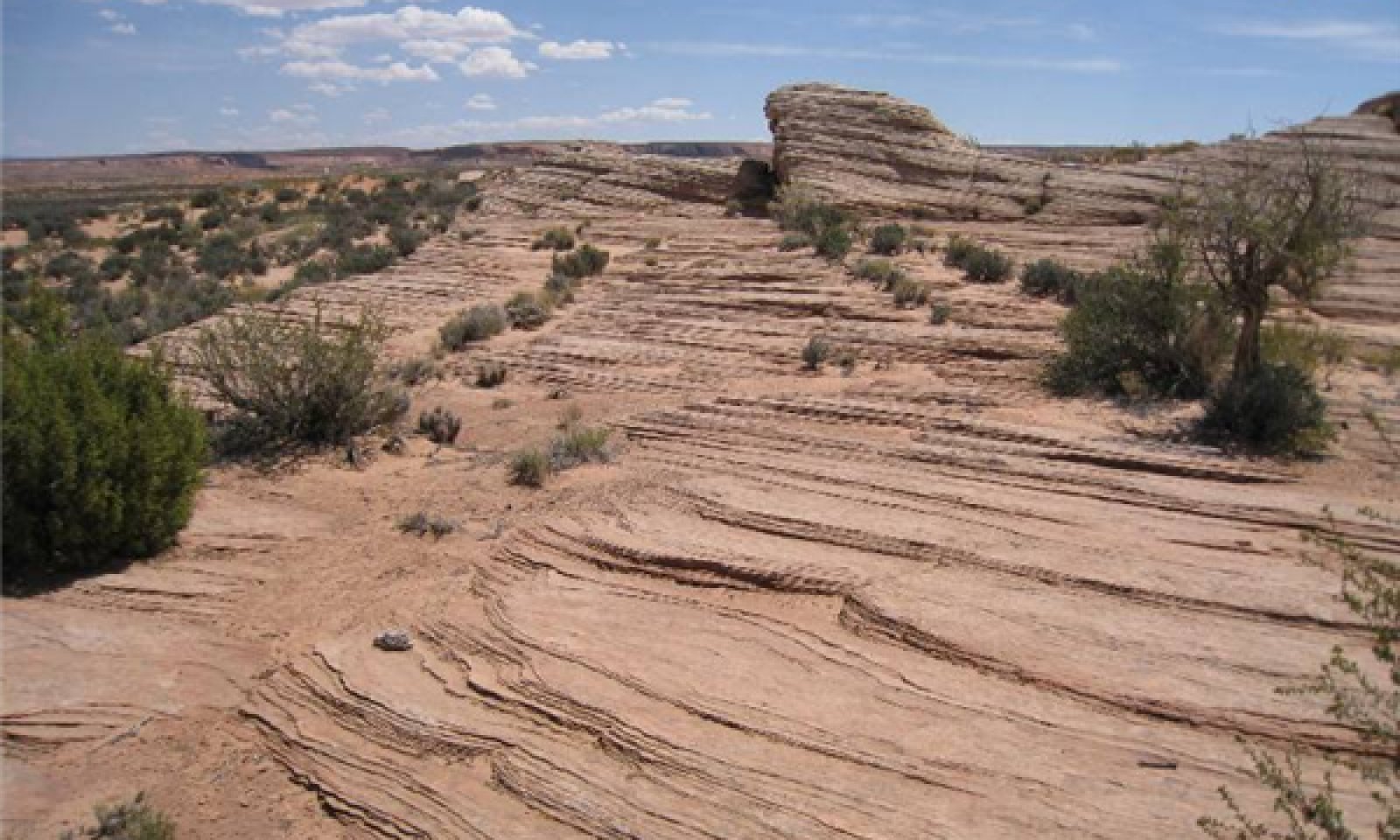
Sandstone Rockland 6-10" p.z.
Scenario model
Current ecosystem state
Select a state
Management practices/drivers
Select a transition or restoration pathway
- Transition T1A More details
-
No transition or restoration pathway between the selected states has been described
Target ecosystem state
Select a state
Description
This state has a variety of vegetation due to extra run-on moisture from adjacent rock outcrops, differences in aspect, temperature, and availability of seed sources. This site receives extra moisture in the form of runoff from the surrounding rock outcrop. This extra moisture results in variety of shrub and herbaceous species, and in some locations an occasional small tree. Plants commonly found on this site are blackbrush, Stanbury cliffrose, Bigelow sagebrush, Utah serviceberry, Indian ricegrass, black grama and galleta.
Sites with very shallow soils and depressions of deeper soils will be dominate by grasses, forbs and low growing shrubs with widely scattered large shrubs. On sites where deep fractures in the sandstone rock outcrop occur along with shallow soil depositions will have a mix of shrubs, grasses and forbs. These sites will also have scattered large shrubs and small trees where available moisture and deep fractures exist. These sites are relatively stable due to lack of fire and low potential from invasion of non-native species.
Submodel
Description
This state has a variety of vegetation due to extra run-on moisture from adjacent rock outcrops, differences in aspect, temperature, and availability of seed sources. This site receives extra moisture in the form of runoff from the surrounding rock outcrop. This extra moisture results in variety of shrub and herbaceous species, and in some locations an occasional small tree. Plants commonly found on this site are blackbrush, Stanbury cliffrose, Bigelow sagebrush, Utah serviceberry, Indian ricegrass, black grama and galleta.
Sites with very shallow soils and depressions of deeper soils will be dominate by grasses, forbs and low growing shrubs with widely scattered large shrubs. On sites where deep fractures in the sandstone rock outcrop occur along with shallow soil depositions will have a mix of shrubs, grasses and forbs. These sites will also have scattered large shrubs and small trees where available moisture and deep fractures exist. These sites are relatively stable due to lack of fire. The plant communities in this state will have introduced annuals including cheatgrass, red brome and Russian thistle.
Submodel
Model keys
Briefcase
Add ecological sites and Major Land Resource Areas to your briefcase by clicking on the briefcase (![]() ) icon wherever it occurs. Drag and drop items to reorder. Cookies are used to store briefcase items between browsing sessions. Because of this, the number of items that can be added to your briefcase is limited, and briefcase items added on one device and browser cannot be accessed from another device or browser. Users who do not wish to place cookies on their devices should not use the briefcase tool. Briefcase cookies serve no other purpose than described here and are deleted whenever browsing history is cleared.
) icon wherever it occurs. Drag and drop items to reorder. Cookies are used to store briefcase items between browsing sessions. Because of this, the number of items that can be added to your briefcase is limited, and briefcase items added on one device and browser cannot be accessed from another device or browser. Users who do not wish to place cookies on their devices should not use the briefcase tool. Briefcase cookies serve no other purpose than described here and are deleted whenever browsing history is cleared.
Ecological sites
Major Land Resource Areas
The Ecosystem Dynamics Interpretive Tool is an information system framework developed by the USDA-ARS Jornada Experimental Range, USDA Natural Resources Conservation Service, and New Mexico State University.
